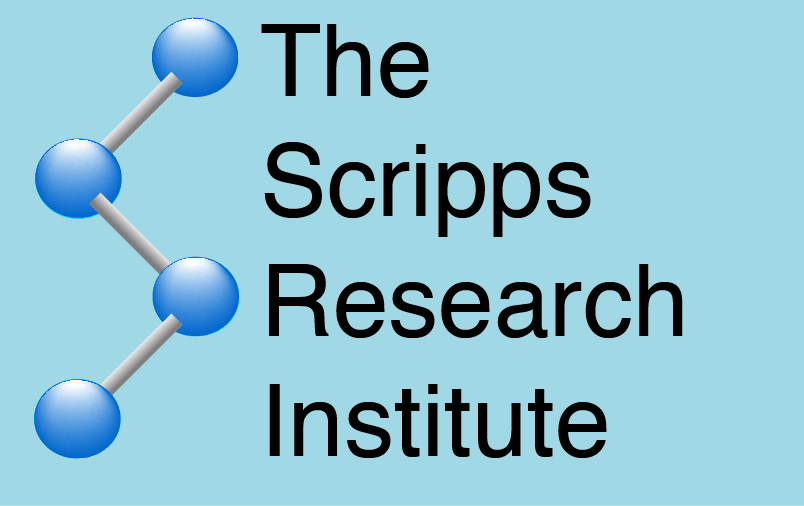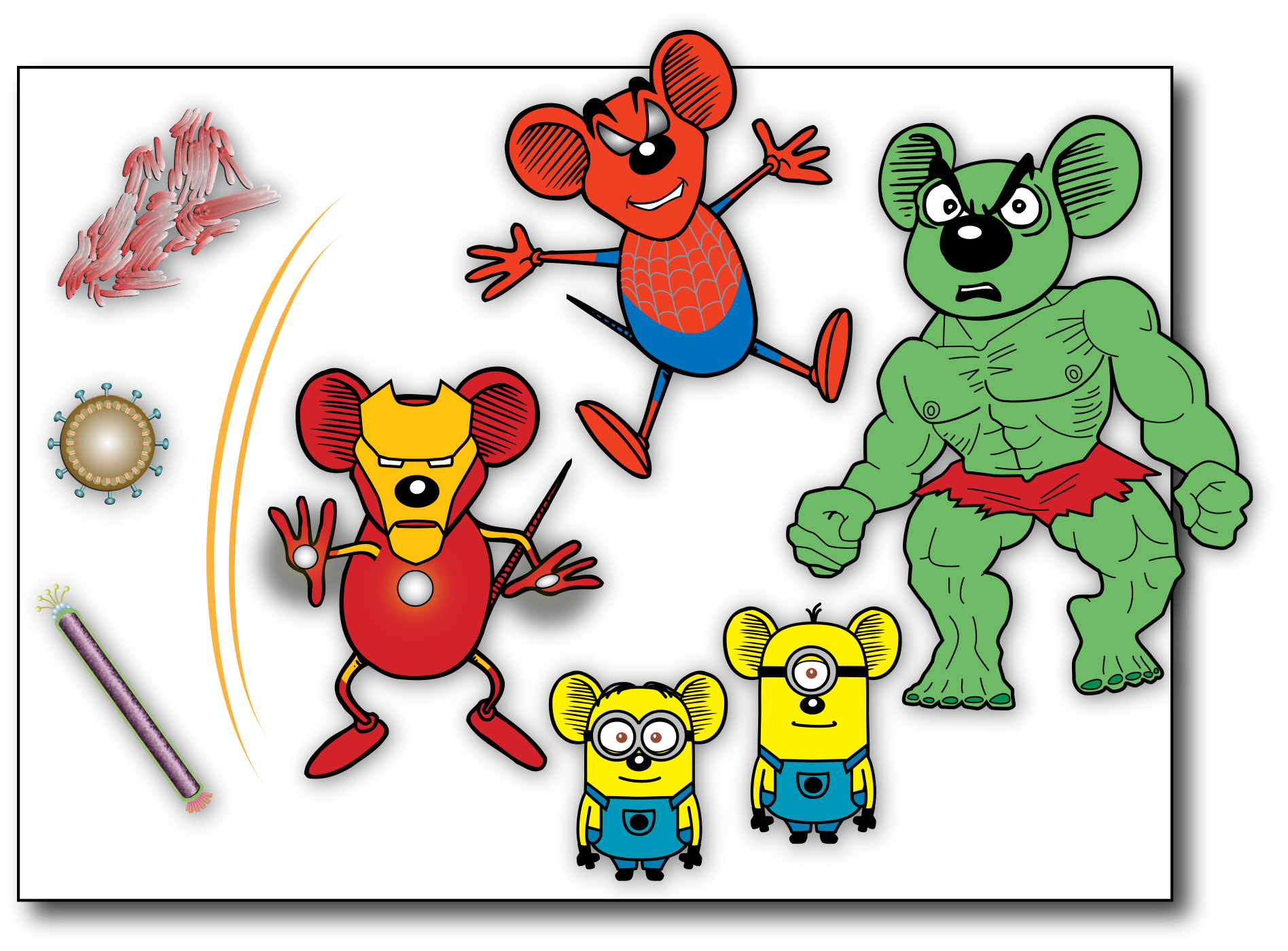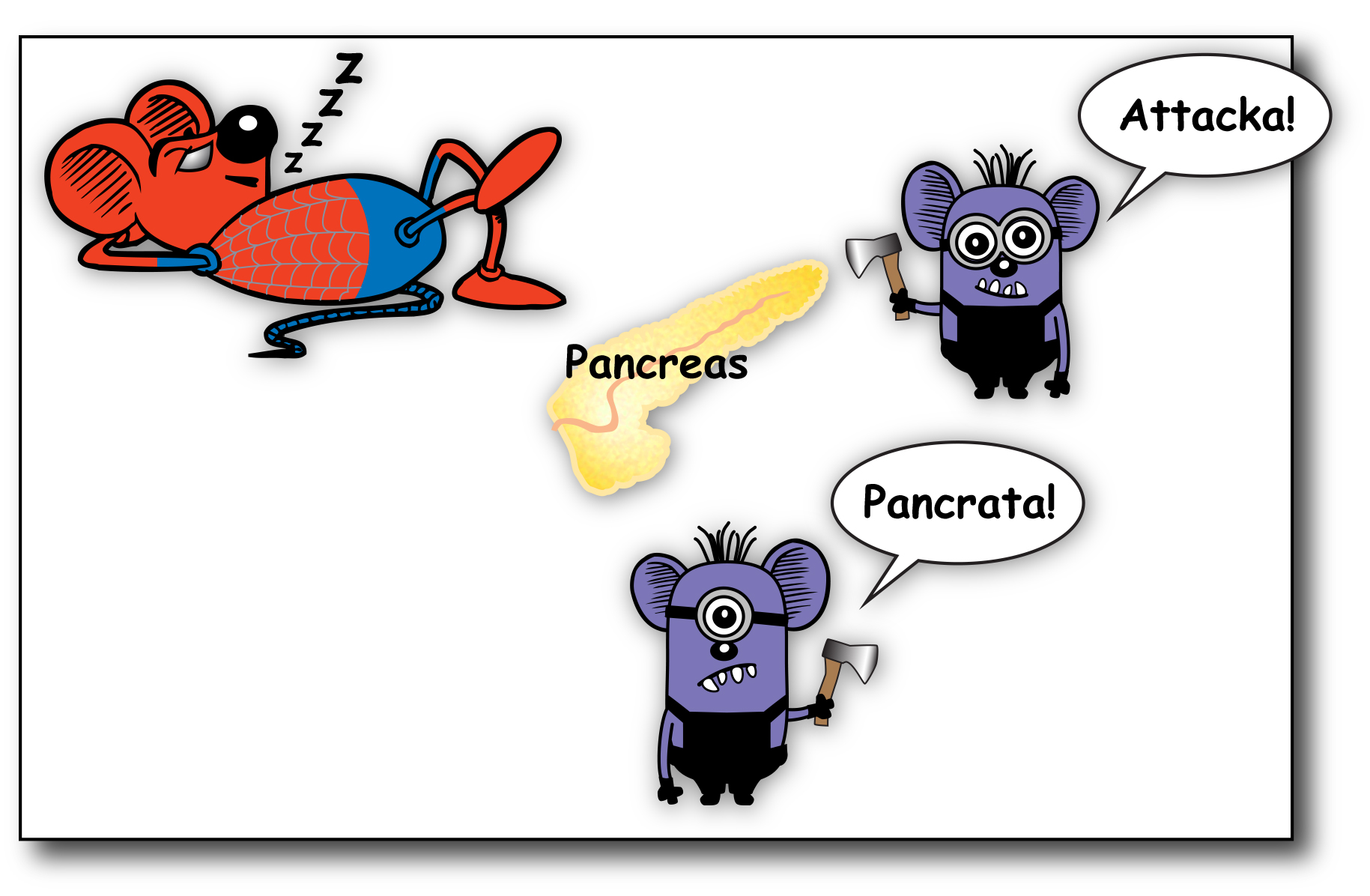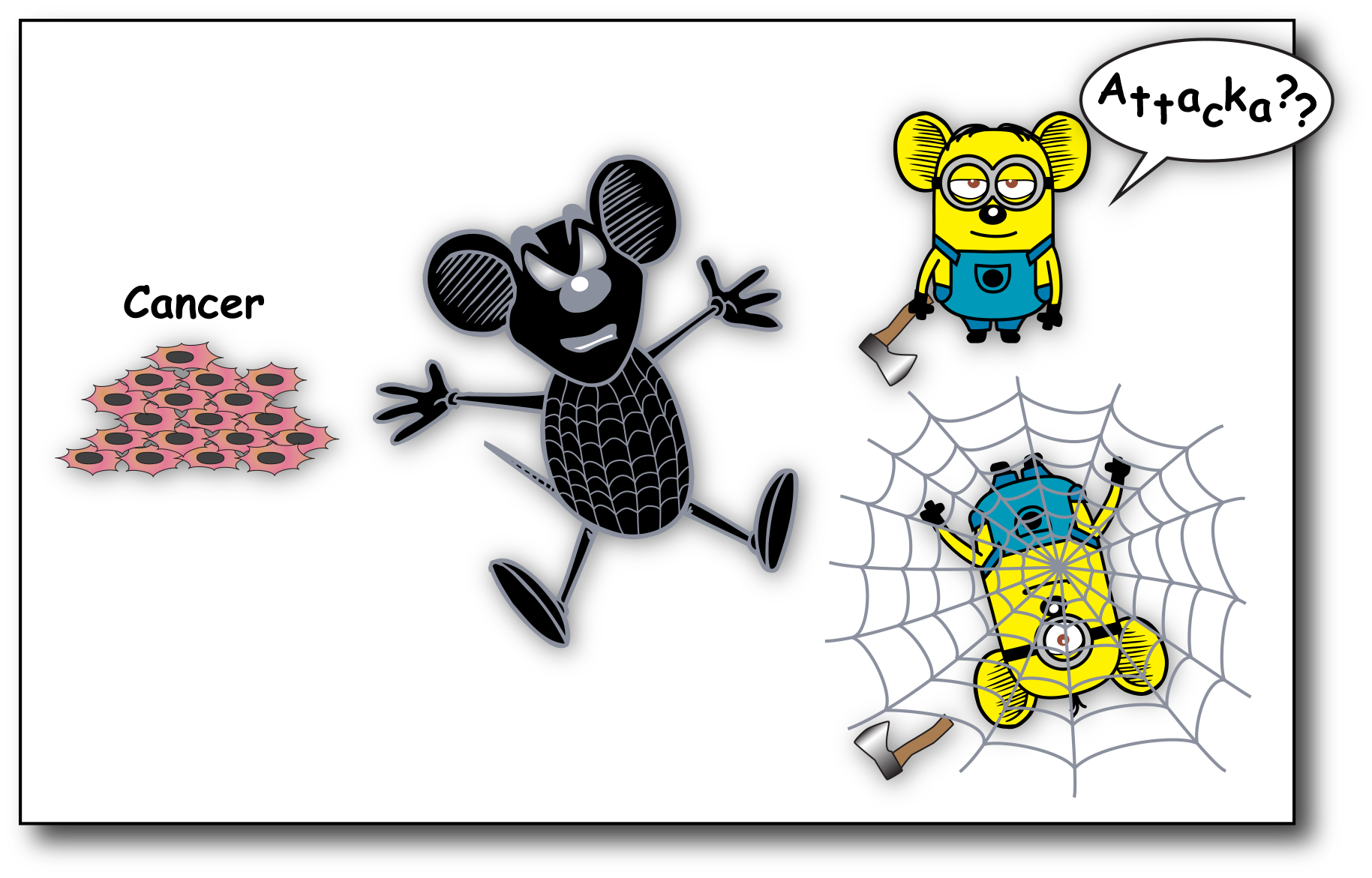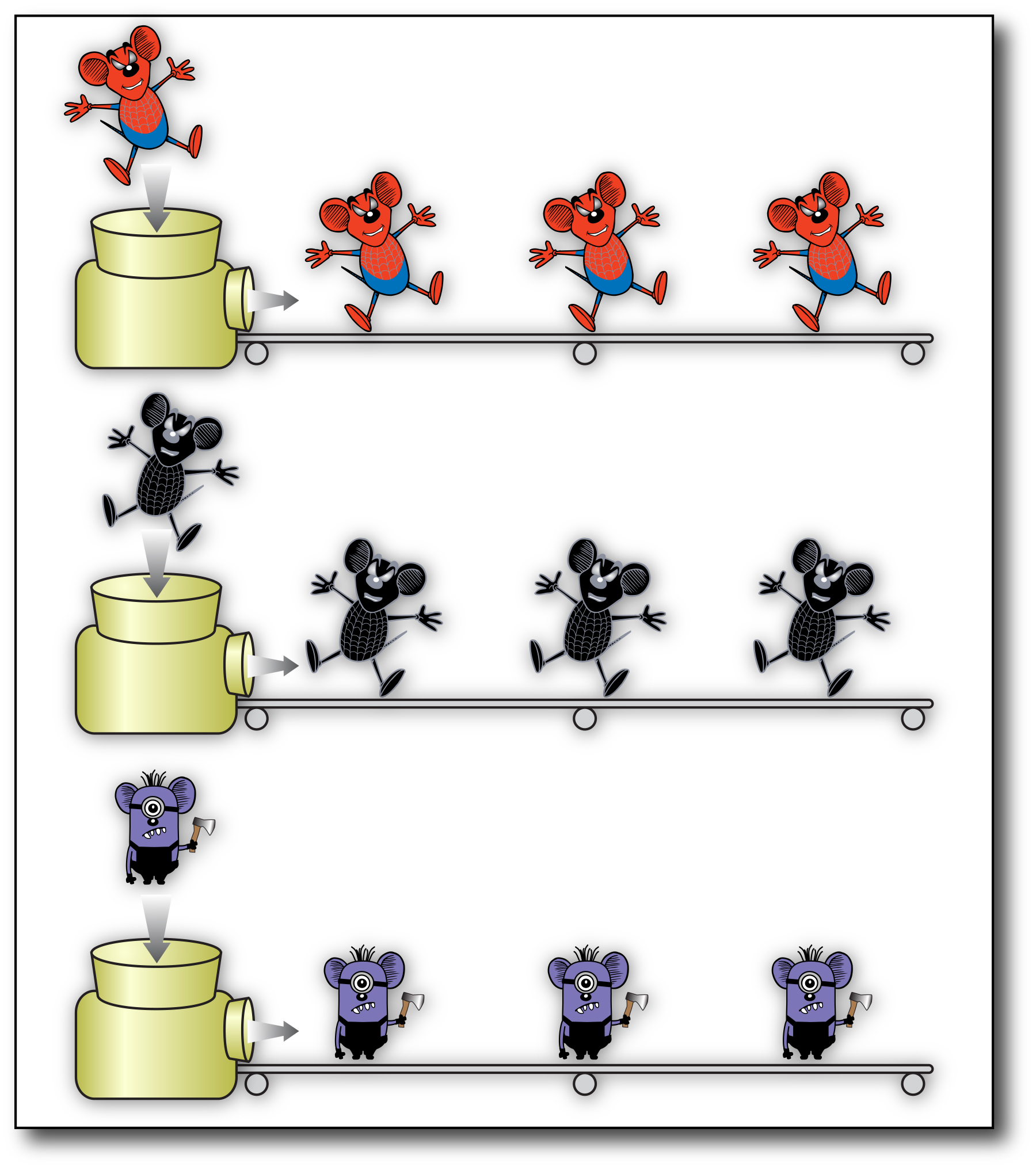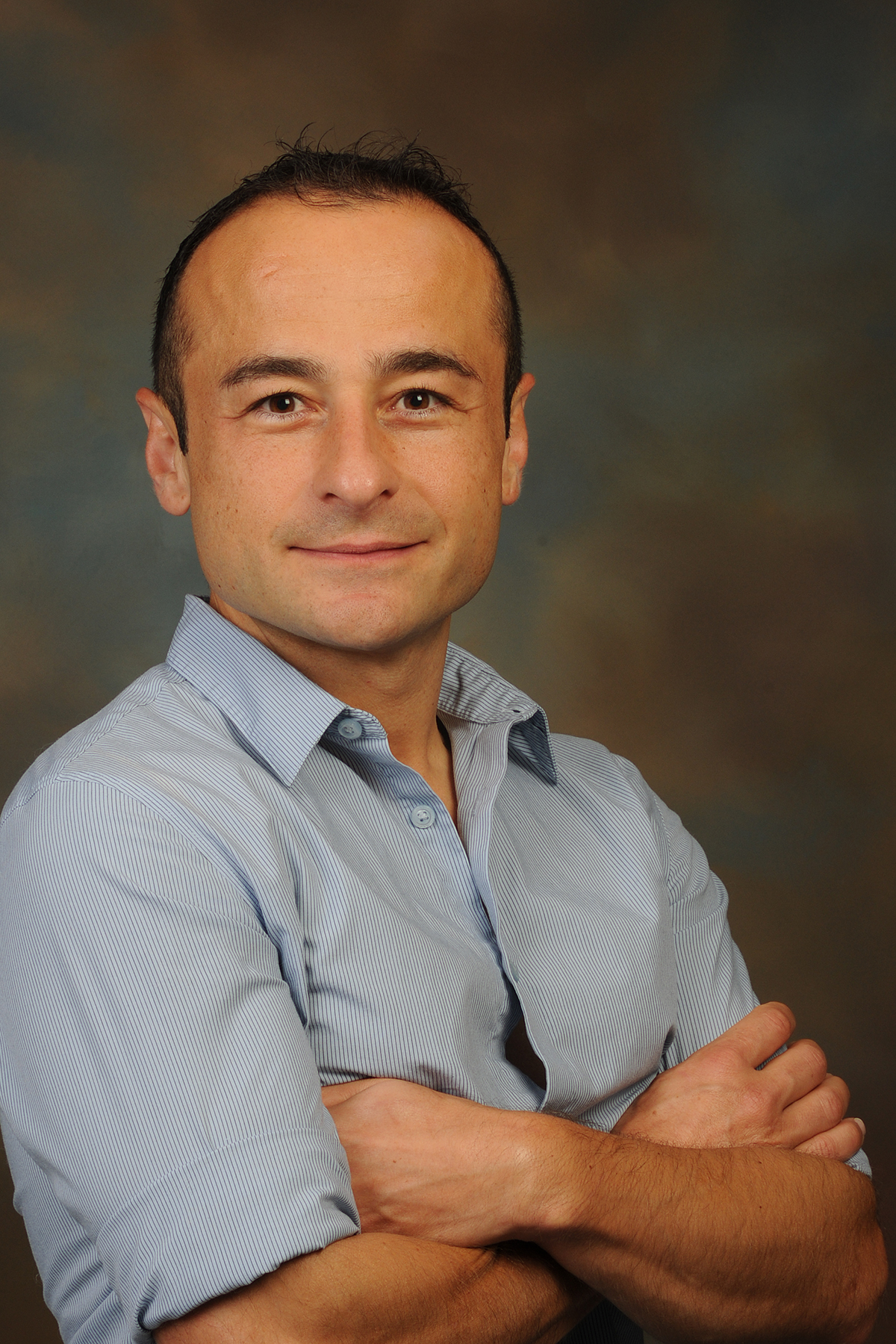Science for the curious Non-Scientist
|
The immune system is the defense system of the human body. It is capable of fighting millions of microbes that we encounter every day. To do so, our immune system recognizes microbes as “foreign”, whereas our own cells are recognized as “self”. While our immune system consists of millions of different immune cells, only a small fraction is involved in any given disease. |
|
|
Our immune system consists of many different players. One group of cells are so-called killer T cells (Mousions). Mousions destroy our own cells that are invaded by a “foreign” microbe. Another important group are regulatory T cells (Superheroes). Superheros ensure that Mousions only destroy infected cells and do not harm our healthy cells. Importantly, each member of any group is different, and has it's own strengths and weaknesses. |
|
|
From an immunological point of view, autoimmune diseases and cancer represent opposite scenarios. In autoimmune diseases, our immune system destroys benign "self" for unknown reasons, and in cancer our immune system is unable to fight malignant "self". |
|
|
In autoimmune diseases, some Mousions attack healthy cells for unknown reasons. For example: in type-I diabetes, Mousions attack healthy beta-cells in the pancreas. Unfortunately, our Superheroes fail to stop the Mousions' attack. Our research explores i) why Mousions turn against "self", ii) how such reneagde Mousions differ from faithful Mousions, and iii) why our Superheroes fail to regulate renegade Mousions. Our long-term goal is to activate our own Superheroes to stop disease-causing renegade Mousions? |
|
|
In cancer, some Mousions have the ability to destroy malignant cells. However, it appears as if Superheroes have been poached and recruited by the tumor and are fighting on the dark side. In the Kirak lab, we want to better understand i) how are Superheroes recruited by the tumor, ii) how such deserted Superheroes differ from loyal Superheroes, and iii) how deserted Superheroes stop tumor-attacking Mousions? The long-term goal of our research is to boost our own tumor-attacking Mousions, and to neutralize the deserted Superheroes? |
|
|
As mentioned above, only a small fraction of our immune system is actually involved in autoimmune diseases and anti-tumor immune responses. In order to better understand these diseases, the Kirak lab is using Somatic Cell Nuclear Transfer (SCNT or NT, also known as "cloning"). Cloning is the same technique that was used to generate Dolly, the first cloned sheep. Cloning allows the production of mice representing a perfect genetic copy of the original cell. In the Kirak lab, we are cloning immune cells that physiologically enter the pancreas in autoimmune diabetes, or cancer. This allows us to generate mice that precisely mimic those cells that are actually involved in these diseases. Using these cloned mice, we can not only look at the development and function of each of these cells, but we can also discover their strengths and weaknesses. |
|
|
With this Clone to Cure approach, the Kirak lab aims at developing new treatments for patients suffering from autoimmune diseases and cancer. |
|
|
Cartoons were generously provided by |
|
